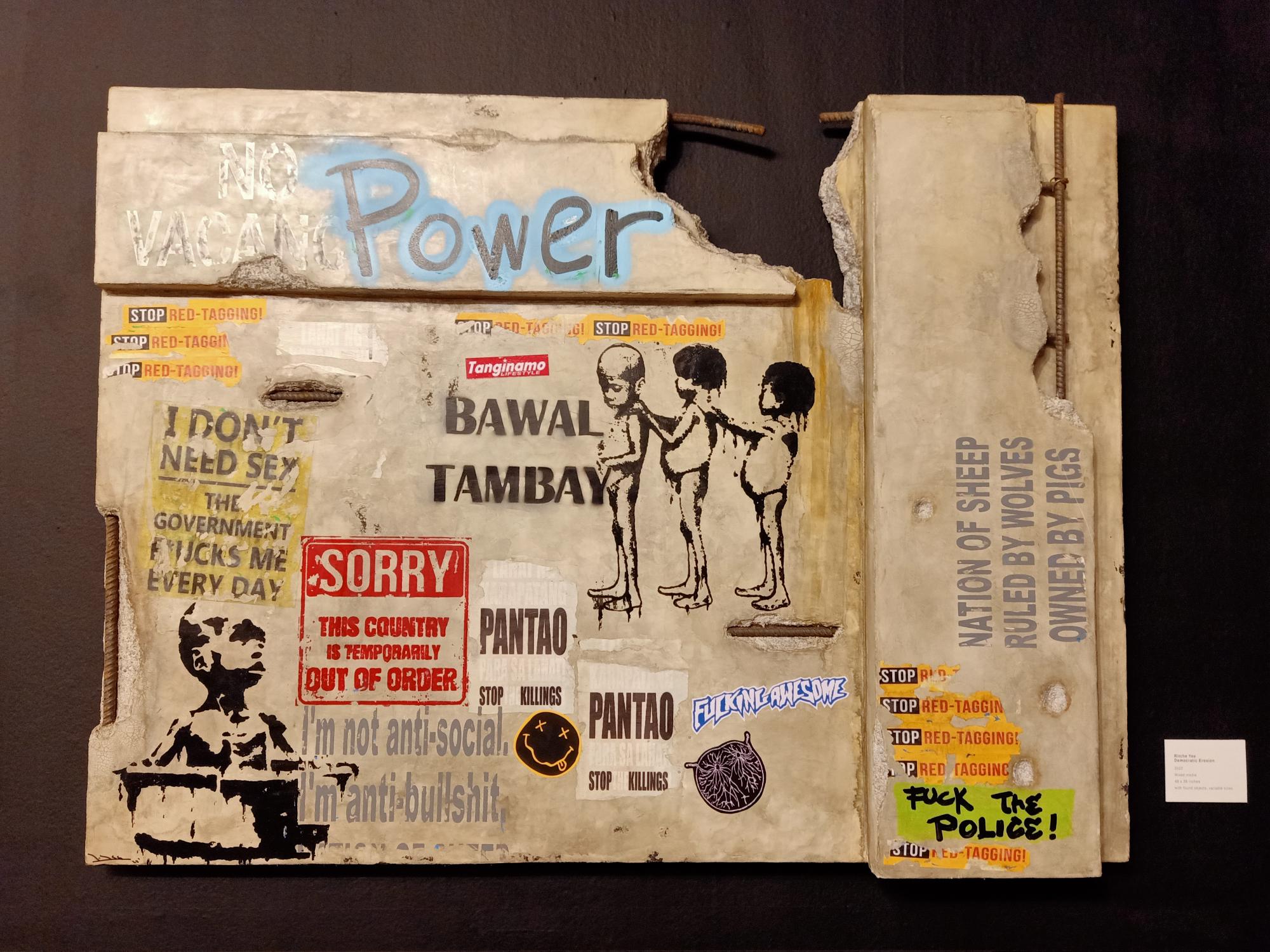Manifestation of societal ills

DISEASES manifest and cause disruption in our bodies, as do problems and ills in our environment and within society. Visual representations of the ills of the body and of society are currently displayed in the exhibition titled “Morbus” (the Latin word for disease) at the NCCA Gallery.
The featured artists in the group exhibit are members of MakiSining, whose birthplace or artistic practice is in cities and towns around Mount Makiling. The participating artists are Paul Hilario, Ritche Yee, Jett Ilagan, Marvin Oloris, Sayid Cedicol, Niko Cedicol, and Bong Salazar. The artists also work in the fields of medicine, biology, public management and public service, multimedia design, and civil engineering.
The idea for the exhibit started in 2021, sparked by many conversations between artist Paul Hilario and artist-curator Riel Hilario (they are not related). Riel was supposed to visit Paul in Laguna to discuss the concept of “Morbus”. Then came the devastating news of his untimely demise on Aug. 8, 2021 of COVID-19.
As an advocate for creatives, Riel Hilario’s last few months were spent actively engaging with fellow artists on systemic illnesses of the art world and the creative ecosystem.
The members of MakiSining collaborated with Laya Boquiren, a friend of Riel Hilario, and applied under the Exhibition Grants Program of the National Commission for Culture and the Arts (NCCA). A year later, the NCCA announced that they were among the successful grantees for 2022. Ms. Boquiren and the artists expanded the exhibition concept to include the various meanings of ailments, from physical to societal.
“Morbus explores various conceptual tenors around the idea of diseases such as the discomfort and ills in our bodies, cities, and nation so that we may explore ways to mitigate and arrest the Morbus that debilitates us, ruminate on the ways we can strengthen our collective immunity, and generate conversations on healing,” Ms. Boquiren, the exhibit’s curator, said during the launch on Aug. 4.
For “Morbus,” painter Paul Hilario shifted to installation work, utilizing discarded old hospital equipment (donated by the Medical Society of Capiz and the University Health Service of UP Los Baños), evoking the image of a patient wasting away from an incurable ailment. The work, TermiNation, presents a man lying on an old hospital bed with empty medicine bottles and boxes beneath him.
Talking about his work, Mr. Hilario noted the detail of an amputated hand, which can either be someone else’s hand or the patient’s own, cutting off the oxygen. As one’s survival or quality of life can be decided upon by someone else, it can also depend on the decision made by oneself, Mr. Hilario said.
His other installation, ReSUScitator, is an old resuscitator with a painting of a snake from the symbol of medicine, the Caduceus, biting its own wings, representing corruption in the medical industry.
Meanwhile, the Stressure Chest — an old military chest filled with plastic cockroaches — was inspired from the story of Pandora’s Box.
“There are some things that we think are important to us but actually it is stress like our vices.” Mr. Hilario said.
Brothers Sayid and Niko Cedicol are both doctors, the former working in military conflict areas and the latter is a community doctor. Their works depict scenarios on public policy, health systems, access to healthcare, and conflict in communities.
Marvin Oloris (also known as MARO) is a practicing engineer and contractor of houses and other such structures. For the exhibit, he used the images of blueprints as a subtle social commentary on corruption in infrastructure projects.
Sound artist Jett Ilagan made Infestation, translating the sounds of commuting in Metro Manila onto paper using graphite and charcoal. He cites poor transportation infrastructure, the lack of public vehicles, and the increase in gas prices as the illness in society and the theme he focused on for the exhibit.
“In the process, I wandered around Manila. I love cycling and recorded jeepneys, [the] sound of the train, different people commuting. Once I gathered the sounds, I put them on the computer and studied their frequencies,” Mr. Ilagan told BusinessWorld, about his work.
Ritche Yee’s unique choice of industrial materials shows corrosion and decay. In a work titled Democratic Erosion, he creates a decaying wall which he considers as the “mute witness to history.”
“I took the principle of Arte Povera and used everyday materials for my art,” Mr. Yee explained. Arte Povera was an art movement prominent in 1967 to 1972 whose works veered away from traditional materials like oil paint, bronze, and marble.
Since 2009, the NCCA has been offering an exhibition space allowing artists from the regions outside NCR (national capital region) to push their artistic boundaries without curtailing creative exploration and expression. The government provides all the curatorial support services for free.
“Morbus” is on view at the NCCA Gallery in Intramuros, Manila until Aug. 31. For more information, visit https://www.facebook.com/Morbusproject. — Michelle Anne P. Soliman



